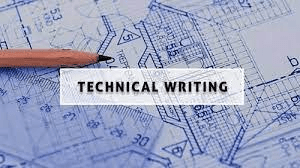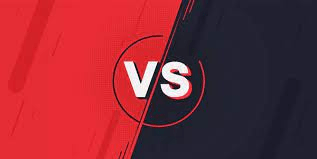Table of Contents

Technical Content and Creative Content are two very distinct forms of Writing.
Both are though unique content write ups but serve different purposes, target different audiences, and require different skill sets.
“The goal is not to ‘sell’ content; the goal is to educate, inform, and provide value.” – Joe Pulizzi
“Creative Content has the power to connect the seemingly unconnected.” – William Plomer
1. Marketers predict that the content marketing sector will generate more than $107 billion in revenue by 2026. (Statista)
2. 82% of consumers have a more positive attitude toward a brand after reading customized content. (Demand Metric)
3. People spend an average of seven hours every day reading digital content. (ExplodingTopics)
As things stand, relevant and quality Content has become a dependable source of knowledge and an important resource of growth for today’s young India.
Understand Content basics here, https://neerajhq.com/content-7-steps-unlock-the-potential-of-write-ups/
So,
What is Technical Content

In the simplest words, Technical content refers to written material that conveys specific information, instructions, or explanations about technical subjects.
Often organized in a logical structured format, with headings, subheadings, bullet points, numbered lists, and tables to make the information easy to follow.
The content is factual and based on reliable sources, often including data, statistics, and references.
Tailored to suit specific type of audiences, such as professionals, engineers, developers, or users of a particular product or service. The complexity of the content is adjusted based on the audience’s level of expertise.
Benefits In Brief
1. Establishes Authority and Credibility
2. Improves the SEO and Organic Reach
3. Educates and Informs its Audience
4. Sales and Marketing Funnel support
5. Enables Product Adoption and Retention
6. Builds Community and Engagement
7. Facilitates Collaboration and Information Sharing
8. Competitors Analysis and Differentiation
9. Reduces Customer Support Costs
10. Continuous Learning and Innovation Support
Overall, technical content is a powerful tool for driving growth, enhancing brand reputation, and creating value for both businesses and their audiences.
What is Creative Content

It refers to written, visual, or multimedia material that is designed to entertain, inspire, engage, or evoke emotions in its audience.
Rooted in imagination and expression, it often involves storytelling, poetic language, or visual artistry that reflects the creator’s vision, emotions, or ideas.
Not bound by strict structures or formats allows freedom to experiment with different forms, such as narrative structures, dialogue, rhythm, and pacing.
Intended for a wide audience base its content can be tailored to specific demographics, interests, or cultural contexts.
Benefits In Brief
1. Boosts Audience Engagement and Attention Capture
2. Enhances Brands Identity and increases its Recognition
3. Builds Emotional Connections
4. Increases Virality and Shareability
5. Competitors Differentiation
6. Drives Website Traffic and generates Conversions
7. Supports Content Marketing Strategies
8. Encourages Audience Participation and Interaction
9. Improves Search Engine Rankings
10. Enhances Storytelling and builds Brand Narrative
Creative content is a vital component of a successful content strategy. Drives both the short-term and long-term business goals by connecting with audiences on a deeper level.
A Comparative Study

Both these topics are vast and can be used differently. A comparative study will shed a better understanding of the two.
Here’s a comparison :
| Technical Content Writing | Creative Content Writing | |
| 1. Purpose | The Primary goal is to convey relevant information clearly, accurately, and concisely. It often involves explaining complex concepts, procedures, or instructions. The focus is on utility and precision, making the content useful and easily understandable for the target audience. | This type of writing aims to entertain, inspire, or evoke emotions. Often used in storytelling, marketing, or artistic expression. The content may be fictional or non-fictional, and the writing style is more flexible, imaginative, and expressive. |
| 2. Audience | The audience typically consists of professionals, specialists, or individuals seeking specific knowledge. Examples include engineers, developers, researchers, or customers using a product. The content must be tailored to their level of understanding. | The audience can be more diverse, including readers, consumers, or anyone interested in engaging or inspirational content. The writing is often aimed at a broader audience with varied interests and backgrounds. |
| 3. Structure and Style | The structure is logical and systematic, often following a standard format like manuals, reports, guides, or whitepapers. The language is formal, with a focus on clarity, objectivity, and directness. Technical writers avoid ambiguity and use precise terminology. | The structure is more flexible, allowing for experimentation with narrative forms, dialogue, and tone. The language can be more informal, poetic, or metaphorical. Creative writers may use literary devices like imagery, symbolism, and allegory to convey their message. |
| 4. Skill Set Required | Strong analytical and research skills. Ability to simplify complex information. Understanding of the subject matter. Attention to detail. Proficiency in technical terminology. | Imagination and creativity. Strong command of language and style. Ability to connect with the audience emotionally. Storytelling skills. Flexibility and adaptability in tone and voice. |
| 5. Tools and Techniques | Use of diagrams, charts, and tables. Adherence to style guides (e.g., APA, MLA, IEEE). Structured templates. Technical editing and proofreading. | Overcoming the writer’s block and maintaining creativity & its integrity. Gaging and Capturing the reader’s interest. Keep them engaged. Balancing originality with marketability. |
| 6. Challenges | Ensuring accuracy and clarity without oversimplification Keeping content up to date with evolving technology or standards Balancing technical detail with readability | Overcoming writer’s block and maintaining creativity Capturing the reader’s interest and keeping them engaged Balancing originality with marketability |
| 7. Examples | User manuals Technical blogs Software documentation Scientific papers Product specifications | Novels and short stories Poems and plays Marketing copy Blogs on lifestyle, culture, or travel Screenplays |
Conclusion

Both technical and creative content writing are valuable skills in different contexts.
U don’t write for yourself, but for your readers/audience. Make sure you understand this valuable mantra before writing any type of content.
Technical content writing is essential for conveying complex information clearly and accurately, while creative content writing is crucial for engaging and entertaining audiences through imaginative storytelling.
Understanding the differences and knowing when to apply it effectively can make a writer more versatile and efficient in their craft.
What are your views on this topic.
Let me Know.
